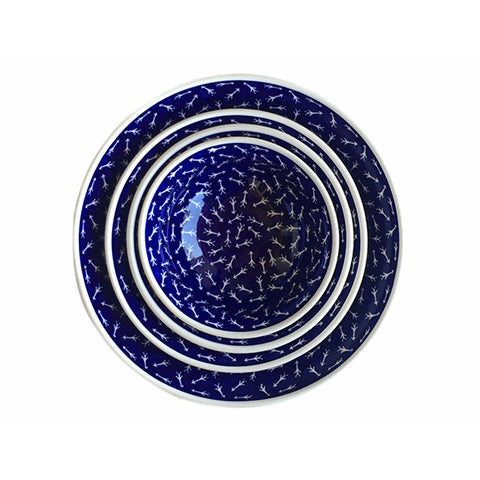The New Look of Polish Pottery - The Artist behind the Art
RENESANS by DOROTA KOZIARA

On her last shopping trip to Poland, Gosia Rojek, Owner of Pas Par Tou fell in love with the clean, graphic patterns of designer Dorota Koziara. As an avid collector of Unique Polish Pottery, Gosia felt that this new interpretation would be a wonderful addition to the traditional patterns that she already sold. The beautiful collection is now available in the Greenport, NY location as well as online at www.pas-par-tou.com.

The Renesans Collection is the result of searching for traditional pottery made by Bolesławiec Manufactory and its modern interpretation. The artist had decided to create a collection which would constitute the modern interpretation of pottery traditions present in Bolesławiec. Pottery manufactured in accordance with traditional formulas unchanged for many years, as well as the tradition which has survived historical turmoil and is still an element which develops the region’s identity, were used as the starting point.

Renaissance, which means revival, is the development of trends stemming from strong tradition, the creation of new aesthetics while respecting classical designs, harmony and variety of decorative designs. The result of this approach is the development of the collection which, similarly to the Renaissance, combines various disciplines, provides the possibility to make one’s own combinations using the collage technique, with harmonized shades and complementing patterns. It is the diversion from minimalism, it is variety which also creates a harmonised whole.

The Renesans Collection design by Dorota Koziara Studio was created in 2015. The artist invited the young designers Joanna Mazurek and Francesco Ippoliti to cooperate.
A part of the collection will be presented as the main Trendy 2016 installation at this year’s Ambient fair in Frankfurt.
Courtesy of Manufaktura w Bolesławcu






















